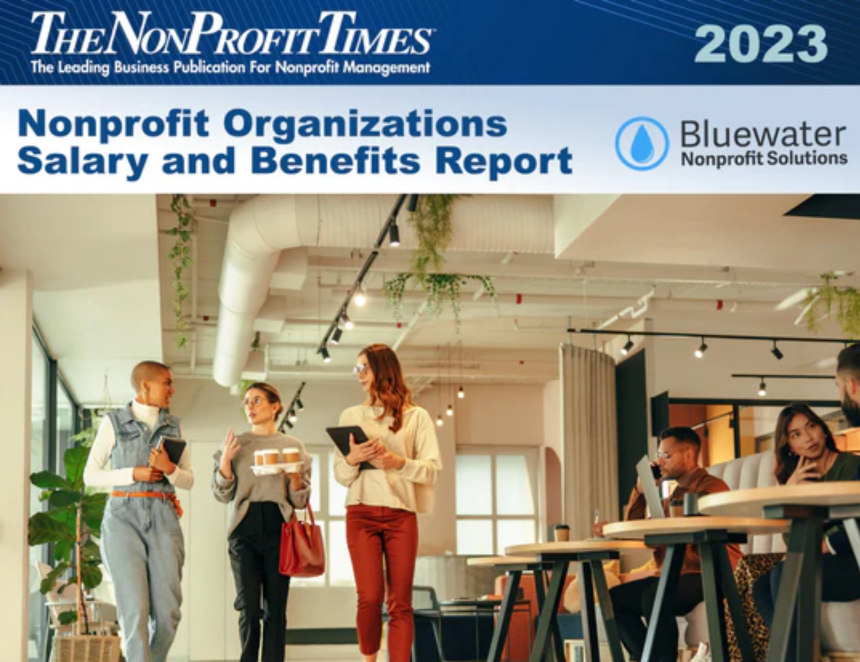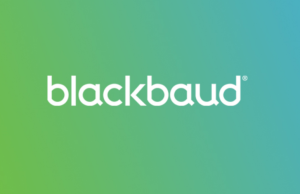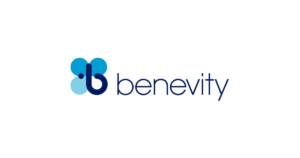Leaders at Planned Parenthood Federation of America are all-in on replenishing the organization’s donor pipeline. While decisions regarding whether to focus on prospecting or donor retention are often rooted in economics (prospect in boom times, retain when conditions are rough), leaders at the New York City-based nonprofit see the 2024 election year as an opportune time for bringing on new supporters.
“For the most recent fiscal year, PPFA donors were especially motivated to give, exceeding initial fundraising targets,” interim Chief Development Officer Rachel Fishman told The NonProfit Times.
Planned Parenthood’s bold commitment comes as its donor universe — those who support reproductive rights — have been spurred into action after a series of legal and legislative challenges. This means the decision to replenish the donor pipeline — prospecting — is based in politics, not economics.
Planned Parenthood’s recent efforts have included a 40-network direct response television pilot program, which aired three unique two-minute spots more than 1,300 times. Along with increasing the organization’s visibility and augmenting other fundraising efforts, one of the program’s goals was reaching a new target audience. As Fishman noted, “Donors giving to television ads are typically 50+, with 65+ donors as the most likely subset.”
The campaign’s results will be evaluated throughout the first half of 2024. “Regardless, we are optimistic about our direct response marketing program as a new donor pipeline entry point,” according to Fishman.
PPFA is also taking an active hand in email- and texting-based peer-to-peer fundraising. “In the past, Planned Parenthood organizations primarily relied on organic peer-to-peer fundraisers and remained neutral as to what platforms supporters used to bring us into their network, whether they be Facebook, Instagram, GoFundMe or Tiltify, to name a few,” according to Fishman. As part of its newly proactive effort, several Planned Parenthood organizations partnered with fundraising platform provider Classy for software support in peer-to-peer operations, Fishman added.
Not all donor acquisition programs represent truly new efforts. PPFA’s face-to-face canvassing efforts were suspended during the coronavirus pandemic but were brought back in November 2021. “Face-to-face serves as a dependable source of younger and more diverse donors, many of whom are new to the organization,” Fishman added.
Planned Parenthood is recognizing younger generations’ approach to contributing to nonprofits, which often focuses less on financial donations and more on volunteerism. “A key audience for PPFA is ‘Activist Donors’,” Fishman added. “These are donor who, in addition to donating, take action with Planned Parenthood organizations by signing petitions, attending events, sending messages to Congress and more. This audience segment has some of the highest levels of donor retention. [It is] fully engaged in the Planned Parenthood mission and seeks out additional ways to stay involved.”
Fishman acknowledges challenges in attracting new donors to her specific organization. “We are seeing more donors juggling competing priorities — particularly abortion-related ballot measures,” according to Fishman.
Prospecting works for Planned Parenthood, but leaders at other organizations, who look at mixed economic signals, are more cautious. Some look at the stock market hitting record highs, low unemployment and overall economic growth rates and see good times ahead. Others are wary due to the now tamed high inflation rate and increased housing costs and other expenses.
At the Humane Society of the United States, Kimberlee Dinn, senior vice president of philanthropy believes the donor rolls are ready to embrace new, younger funders after two years of donor gains made after the height of the coronavirus pandemic, followed by “pretty flat” levels that track with other organizations in the space. “The thing that has helped us weather this pattern is an investment in sustainer donors,” she said. “We find they are more mission- and advocacy-focused, as opposed to one-off donors.”
Some of the organization’s efforts to pull in new donors have focused on short messaging service (SMS) or texting-based efforts, which according to Dinn attract newer, younger and more diverse donors. Those efforts overlap with another donor recruitment goal for the Washington, D.C.-based organization: generating more midlevel funders.
“Our midlevel program tends to skew a little bit younger than our more traditional direct mail channels,” Dinn said. “We’ve been doing a lot of testing of channels to see where we’re bringing in more diverse and younger audiences. Within our face-to-face program, or canvassing work, our average age is 45 to 50, which is way younger than our direct mail channels, which tend to skew toward older women.”
In focusing on texting, the Humane Society is bringing a new perspective to an old(ish) medium. “When people first started SMS texting, they were mainly using it successfully just to attract one-time donors,” Dinn said. “We have taken the approach of building relationships with donors so it’s not just ‘there’s this emergency rescue, we need you to donate now.’”
The new approach focuses more on information, such as legislative wins, advocacy or mission-related work. “It’s helped us build community, so when we do ask for money, we’re not getting quite as many ‘take me off this list’ or ‘don’t text me again’ messages,” Dinn added. “A lot of new people are coming in the pipeline. They’re signing up to get texts and alerts, and then they are converting to becoming donors.”
Expanding the Humane Society’s donor base has not come without trepidation. Some within the organization initially worried younger, more diverse donors would not be as easily funneled into major gifts and planned giving programs, Dinn said. That has not been the case, so far. “The more diversified donor base we’re building is going up into our pipeline for planned giving just as well as our more traditional tried-and-true donors,” she added.
Because of this observed pattern, organization leaders are moving ahead with initiatives that stress diversity to reach new donors. They have brought in a broader swath of voices to their annual conference for animal welfare professionals and shelter workers and have upped the number of subsidized attendees within the BIPOC community. This effort goes hand in hand with a renewed focus on rural and otherwise underserved communities, all of which bring the organization’s message and mission to people who have been underrepresented among its donors.
The changes in channel use for appealing to younger donors are being matched by modifications in messaging, similar to what the organization is seeing within its SMS efforts. “Younger donors are oftentimes more interested in global work and respond positively to things that are happening outside of the United States. Whereas, I feel many of our older donors are more interested in what’s happening in their region or local animal shelters,” Dinn said. “Younger folks are making the connection between climate change and animal agriculture and they’re concerned about both of those issues.”
The sheer size of organizations such as Planned Parenthood and the Humane Society give them leeway to invest in broadening their donor base with initially less-lucrative funders. Smaller nonprofits walk a balance between building their pipelines for future results and focusing their limited resources on major gifts, bequests and other opportunities that, when successful, yield higher payoffs.
At YES Prep Public Schools, a public charter school system that functions in underserved communities within Houston, Texas, the primary focus has been on finding those within its hundreds of donors who can be migrated up the major gifts ladder.
There are no plans to slack off on targeting this funder population, but the organization is starting to move toward diversifying its base, according to Director of Development, Individual Giving Jennifer Wijangco, CFRE. “We’re growing in terms of younger donors simply because we’ve started a staff giving program” which is akin to nonprofit board members tapping their personal networks for donations.
But there is an impetus toward pulling in other younger donors. That effort will start with an alumni-focused effort. Given that the program is 25-years-old, and its first class of students started when they were in sixth grade, the first wave of participants are now coming into their prime earning years.
That effort is not part of YES Prep’s development program. Instead, its relatively nascent college initiatives department is connecting with alumni through a series of networking activities. Once its alumni association becomes more active, plans call for the development team to partner with those staffers and promote giving opportunities.
Wijangco and her team are already building out the mechanisms for effectively communicating with these younger potential funders. “We have experimented with video messaging to donors,” she said, adding that recent efforts marked the first time the organization formally engaged a service to produce its messages. “That gets a better view rate than just a regular email. People are engaging with it — clicking to watch.”
Video email isn’t the only way YES Prep is trying to grab potential donors’ attention. In the everything-old-is-new category, the organization is testing traditional paper direct mail solicitations. “People are getting too many [traditional] emails,” Wijangco said. “Are we going to circle back to mail being the cool thing again? Whatever ways you can find that cut through the noise are worth a try at least once.”
Wijangco’s primary focus is on retention and migration up the donation ladder, as opposed to bringing in new funders. “There are fewer people giving more,” she said. “As much as I would like to be very democratic about it and have more donors, I think people are getting choosier about where they give their money, and they’re trimming the list down of the organizations they support.”
Another charter public school, the Washington, D.C.-based Academy of Hope, has long focused on adult education. It has traditionally, primarily derived its funding from institutions. That began to change five years ago, when Chief Strategy and Growth Officer Joy Bentley Phillips and Director of Development Mirvlyne Brice joined the organization.
“Before Mirvlyne and I came on board, we were probably seeing individuals being around 5% of our total fundraising,” Bentley Phillips said. “We’ve been able to bring that percentage up to around 10% or 15%, depending on the year. But yes, it’s the same people giving the big gifts.”
That might be changing. “We’ve restructured our comms and marketing team to include digital engagement and fundraising, which we are relying on for donor acquisition,” Bentley Phillips said. “We’re also working to rebuild our pipeline and our major donors through giving circles.”
Toward that end, some of Academy of Hope’s messaging has been changing. “With our giving circles, we are giving our donors really clear funding priorities,” Bentley Phillips added. “Historically we have had a long list of funding priorities. Now we offer, basically, two big ones” which vary from campaign to campaign.
Part of the reason Academy of Hope had not focused on recruiting individual donors was the critical nature of its fundraising. Five years ago, the $4 million fundraising budget was earmarked for existing programming and operational costs, as opposed to enhancements. But foundation largesse expanded that budget to – most recently – $15 million, which has allowed the department to build out its focus.
Even so, while the department is extending its reach into alumni operations, “that’s not who re rely on for donors – that’s not who’s giving us our big dollars,” Bentley Phillips said.
The new focus on individuals is rooted in engaging “emerging professionals,” people who can be reached through ambassador programs and social media content. “We are looking to increase [our presence] among 25- to 40-year-olds who were engaging with our social media,” Brice said. “Language that is inspiration seems to work better for them. Folks who care about aspirations, folks who care about social justice issues in terms of education are who we’ve been attracting.”
So far, the new efforts around mission-focused messaging are paying off, at least in terms of engagement. “At the end of last year, we might have seen 20% open rates,” Brice said. “[This year] we are seeing 35%-45% open rates and 9% click-through rates. The other thing we have done intentionally regarding donors at all giving levels is being more tangible. Instead of saying ‘Would you give to us?’ we say ‘Please support a shuttle bus.’”
The storytelling, illustrative approach is one Academy of Hope leadership will take into each new channel it explores, whether it be TikTok or, like the Humane Society, SMS outreach. Academy of Hope has boosted its social media followers from 1,500 last November to 6,500 and is using its texting efforts increasingly for narrative purposes to prime those who engage with their content to eventually support the organization financially.









